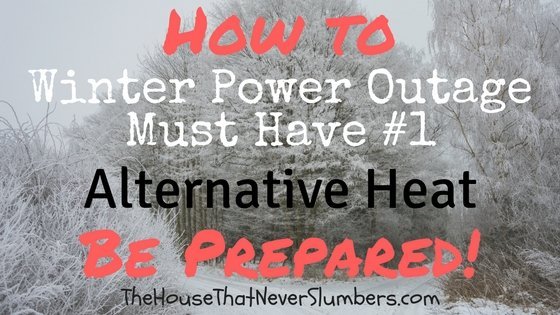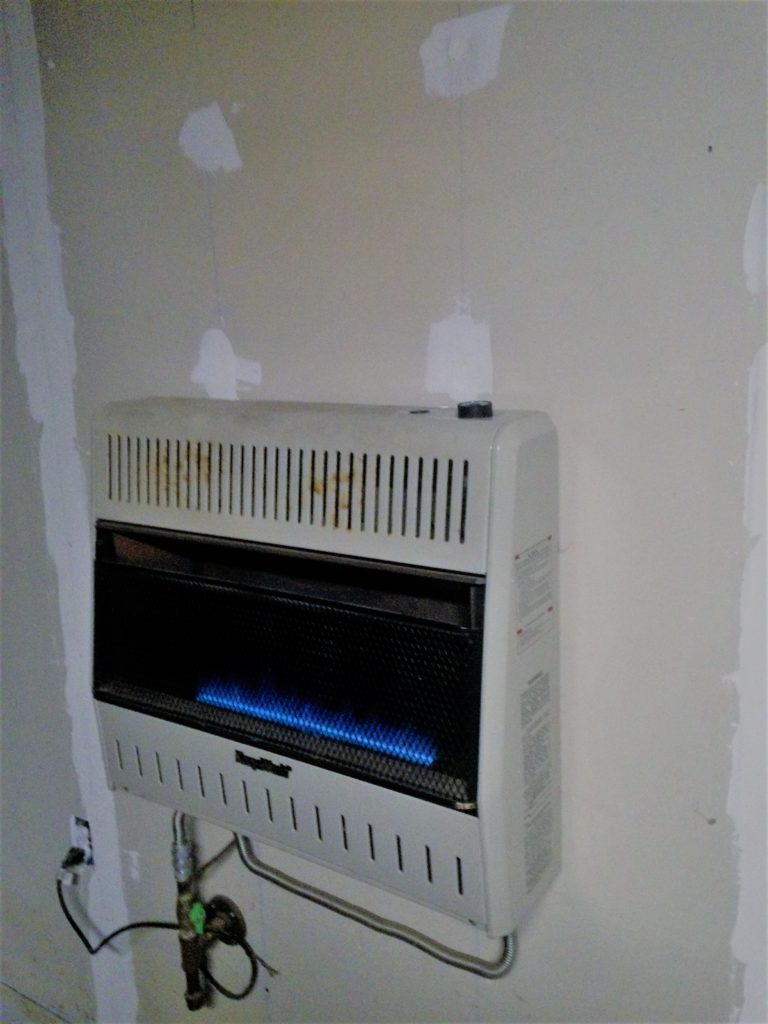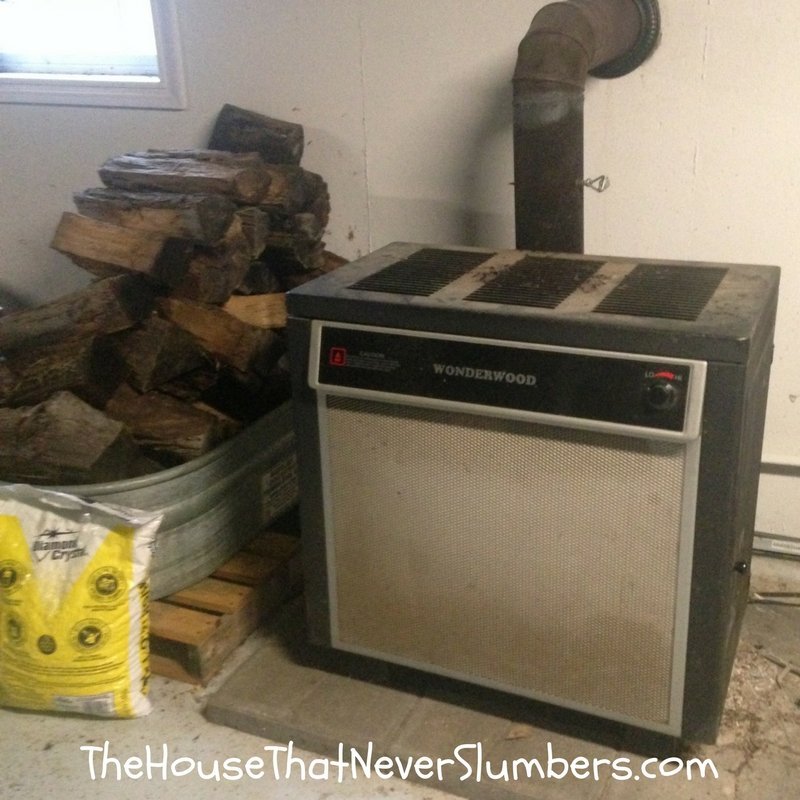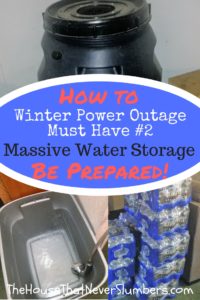
Winter Storm Preparedness – Alternative Heat without Electricity –
All the times that we’ve had longterm power outages going back as far as I can remember have been the result of winter weather conditions. This means, in our area, having a way to heat your home that doesn’t rely on the electrical grid is vital to survival. Small children and the elderly are especially susceptible to cold temperatures. There are several different options people use to stay warm during power outages, and some are much safer than others.
Indiana weather can be tricky, and sometimes it catches people off-guard. It’s completely feasible to experience all four seasons of weather in just one day here. Those aren’t just funny memes that circulate on Facebook. Last week it was in the 50’s for a couple of days, and all the men were breaking out their shorts and sandals. Then it started raining like we should build an ark, and before 24 hours had passed, that rain had turned to ice.
If you’ve read all the Little House on the Prairie books, you’ll remember the time that Pa and Ma Ingalls left for town one morning in good weather, and along came a blizzard that caused Laura and Mary to have to move the entire woodpile into the house while they were home alone because they were worried they would have to burn the furniture. Or do you remember that time Pa was living in the snowdrift for days because snowstorm came very suddenly, and they were sure he was dead somewhere on the prairie? They didn’t have the luxury of advanced weather prediction technology, but sometimes we’re not much better off today when it comes to knowing how to prepare for a winter storm.
We decided before we even started to build this house that we wanted a basement, and we wanted to eventually get it to the point of being mostly functional without the power grid. I don’t like to be caught off-guard. We still have a ways to go in getting the basement truly off-grid, but we’ve made great strides. You might wonder why the basement? The major reason for that is because it’s much more energy efficient when it comes to heating and cooling. Because the walls are thick concrete and it’s mostly underground, it takes very little to bring it to a comfortable temperature.
Survival and Comfort
During summer months, the basement is always cool without any air conditioning (we do run a dehumidifier). During winter months, it never goes below about 50 degrees, even if we aren’t heating it separately. Even without any form of heating, our basement would stay at a temperature that would let us survive during a winter power outage with just warm clothes and extra blankets. We would not freeze. It wouldn’t be a temperature I would enjoy, but it would be safe. The basement staying in the 50’s also means we’ve never had to worry about pipes freezing even before we had alternative heat in our basement. Freezing pipes can be a huge concern in many homes, especially during a power outage.
I don’t just want my family to be safe during a winter power outage. I would prefer we are also comfortable, and that requires some source of alternative heat. For anyone who doesn’t have a basement that stays warmer than the outside temperatures, alternative heat can be a matter of life or death in a power outage.
Heating and Cooking
People in the midwest generally use a variety of heat sources when they don’t have electricity. Some have fireplaces. We actually have a fireplace in our family room upstairs, but the house is an open floor plan, so it would still be very cold with just that fireplace. Our furnace is propane, but it won’t start without electricity, and the forced air is all electric. The same is true of our oven. It’s propane, but safety features keep it from working with no electricity. We can’t even light the pilot light with a match because of the safety features. I’ve been told those safety features have been added because so many people would try to heat their homes with their oven during a power outage, and that’s not safe due to the lack of proper ventilation.
My parents own a propane cook stove that will still light during a power outage. When their last stove finally bit the dust, they paid a higher price to buy one that remains fully operational without electricity. They purchased this oven from an Amish store. There are only a few models still manufactured with that capability. If the stove that came with our house ever stops working, I will replace it with one that works during a power outage as well.
Questionable Heating Methods
Many people use kerosene heaters during a power outage. I’ve always been bothered by the fumes from those. Some people use heaters that are really meant for barns or garages. Those aren’t necessarily meant for use in a home. Some of these heating methods put people at risk for carbon monoxide poisoning. Some are a fire hazard. You should have smoke detectors and a carbon monoxide detector in your home anyway, but you should be absolutely sure to have a detector that is battery operated if you might be using questionable heating methods in the event of a power outage.

 Alternative Heat Phase 1
Alternative Heat Phase 1
I knew I didn’t want to rely on a questionable heating method during a power outage. I didn’t want to use some form of heating that meant we would need to have a special type of fuel on hand. What if we forgot to replenish our fuel supplies? We needed some form of heat in the basement anyway to make it comfortable enough to use as living space year round. It only made sense that whatever heating system we installed in the basement should be something that would also work during a power outage.

When they poured our basement walls, we had them leave a hole the right size for a chimney, but installing a chimney is rather expensive. During the first several years we were living here, it just wasn’t feasible to add a woodstove and chimney. One spring we found ventless propane wall heaters on sale at a very discounted price because it was the end of the season. I think we paid about $120 for a heater that is normally around $300. Since we already use propane upstairs for heating and cooking, this was a good option for us in the short term. The installation ended up costing more than the heater itself. I think it was around $300 to have the copper pipes run and the heater installed in the wall. It does a pretty nice job of keeping the basement at a decent temperature.
However, the ventless propane wall heater did not fill our need for an alternative means of cooking during a power outage. We were never without some way to cook because we have a grill on the back deck. People in Indiana (maybe just the redneck people like the ones who live here) can occasionally be seen grilling in winter standing on their decks wearing a winter coat and gloves flipping burgers. Sometimes winter is long, and you just want to throw a steak on the grill and pretend it’s spring. Since the outside grill is not completely out of the question in the winter anyway, it was always my back up plan.
For most of those years, I just prepared for winter storms by having foods on hand that didn’t require heating – cold meat sandwiches, granola bars, and so on, but we’ll go into that even more in the next post on Winter Storm Preparedness Must Have #3 – Non-Perishable, Easily-Prepared Food.
Alternative Heat Phase 2
A couple of years after we installed the ventless propane wall heater, I found a really good Craigslist deal on a wood stove and chimney. A family an hour away from us had put in a wood stove at their house one winter and then found out they were moving to Texas. The buyer of the house didn’t want to heat with wood, and the family had no use for the wood stove in Texas. They sold us the entire stove, plus the extra blower motor, plus all the chimney for $600. The stove alone sold for around $600 at that time. Each 3-foot section of chimney pipe was going for around $100 then, and they now appear to be going for nearly $200 everyplace I searched online.
This was the exact stove we had been looking into at Rural King anyway, but the chimney alone was going to be over $1000 if we bought all the parts new. We liked this stove because the top grate is on hinges and can be raised to allow cooking right on the firebox. This would solve both our heating and cooking problems during a winter power outage.
We bought the stove in late autumn and didn’t have time to install it before that winter, so it just sat in the basement. I think it actually sat in the basement for two whole winters while we researched how to install it procrastinated like we tend to do on home projects. Fortunately, we didn’t have a power outage during that time. Then at the very beginning of the third winter, we were getting predictions for a major ice storm. Rifleman Dad installed the last of the chimney during the ice storm. He was on top of the roof in the middle of freezing rain attaching the chimney. Don’t try that at home, folks!
Did I mention my husband also had to buy a truckload of firewood during that freezing rain as well? This is why you should plan better than we did. Don’t worry though. Since we had our wood stove installed just in time for the worst of that storm, there was no power outage. Remember the secret trick I taught you in How to Avoid a Winter Power Outage by Being Prepared? Once again, we prevented a winter power outage by getting ready for it. It works every time!

We really did have to conduct quite a bit of research on the building codes for a wood stove during the time it was just sitting in our basement. We did not want to install this stove unsafely. It also needed to be installed correctly because insurance companies don’t want to cover an incorrectly installed wood stove. Rifleman Dad sells insurance, so we’re very aware of situations that might cause an insurance company to turn away clients, or rate them higher, or exclude coverage.
There are all kinds of guidelines on how far a stove has to be from the wall and so on. Ours is just adjacent to a bare concrete wall, but we still installed it according to the guidelines for a wall made of wood. Ours is also sitting on concrete, but there are special barrier boards that must be used if it sits on other types of flooring. Codes on wood stove installation vary by location, so you will need to research for your area or pay someone to install it professionally.
Lower Heating Costs
The wood stove has been a great investment for us. We don’t use it every day in the winter, but we do use it when the temperatures hover around zero to offset the cost of propane. Using the wood stove under the house keeps the upstairs warmer, so the furnace doesn’t have to run nearly as much when we have a fire going. We own twelve acres of wooded land, and my parents’ also have a large woods. We have access to more lumber than we need.
The chimney is very easy to clean compared to the masonry chimneys in old farmhouses. There’s a cleanout tee on the bottom that just has to be opened. Running the cleaning brush through the pipe lets all the ash fall right out the little trap door. You can shine a spotlight and see that everything is clean. If we had a masonry chimney, I would probably feel the need to hire a professional chimney sweep, but cleaning this metal chimney is fairly simple. The chimney brand is DuraPlus.
We use water troughs to store the firewood in the basement. The metal trough is one we bought from a neighbor. The bottom had rusted through in one spot, so it was no longer able to be used for it’s intended purpose. It works perfectly for storing firewood though. I want to attach it to the wall, but Rifleman Dad thinks that’s a bad idea because we can pile it too overflowing the way it is now. My way would have the trough on its side with the bottom against the wall, and we would have to stack the wood neatly in the trough. Yeah, I know any plan that involves completing a task “neatly” is probably unrealistic at The House That Never Slumbers.
Be Prepared
Last Thursday, in anticipation of the 2″-22″ inches of snow they were predicting for us, my daughters brought in enough firewood to fill both troughs. They used a wagon to carry it from the woodpile behind the house. We averted the crisis by being prepared. The schools here were canceled on Friday because the roads were slick, but we maintained power. Were all our preparations a waste of time? Definitely NOT! I would rather be prepared a hundred times when it’s not needed than to be unprepared the one time we actually have a power outage. I will never complain about getting to keep power during a storm.
Stay tuned for our next post on Non-Perishable, Easily-Prepared Food. Or go back and check out Winter Storm Preparedness Must Have #2 – Massive Water Storage on the Cheap and Must Have #3 Power Outage Foods.
How do you heat your home during a winter power outage?
If you found this post helpful, please like, share, pin, tweet, follow, and subscribe to The House That Never Slumbers!







